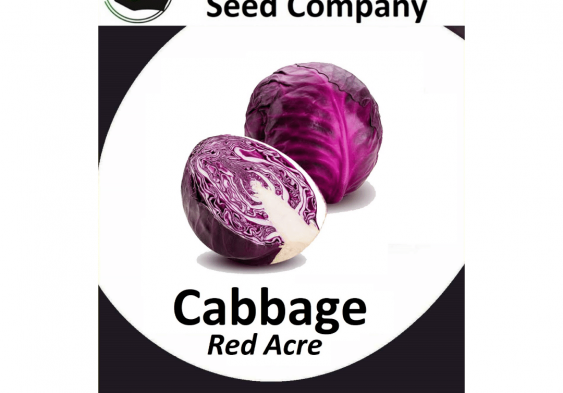Subtotal: R46.00
HomeCabbage Red Acre Seeds


54 in stock
R26.00
Cabbage is a fairly easy plant to grow, as it is a hardy vegetable, and also comes in different colours, such as red, green and white. Most cabbages will have smooth, tightly packed heads of leaves, but some varietals have crinkled leaves. Cabbage belongs to the Cole crop family, like broccoli and Brussels sprouts and […]
Cabbage is a fairly easy plant to grow, as it is a hardy vegetable, and also comes in different colours, such as red, green and white. Most cabbages will have smooth, tightly packed heads of leaves, but some varietals have crinkled leaves. Cabbage belongs to the Cole crop family, like broccoli and Brussels sprouts and has more vitamin C than oranges.
Before Planting: Cabbage require fertile soils in a pH range of 6.5-7.5, supplied with consistent irrigation throughout the growing period.
Planting: Use early and midseason varieties for Spring crops. Sow 2 seeds per cell 1/4″ deep. Seedlings should be ready to transplant in 4-6 weeks. If possible keep soil temperature over 75°F until germination, then reduce air temperature to about 60°F. Transplant outdoors, 12-18″ apart in rows 18-36″ apart. Cabbage prefers cooler growing temperatures, between 55-75°F, but will produce decent crops under warmer, summer conditions. Use midseason and storage varieties for Fall crops. Start seedlings in late spring and transplant them to the garden in early summer. To ensure mature heads, seed the crop early in areas where heavy freezes occur early in fall. Successful cabbage crops can be grown where winters are mild. Transplants can be set out from September to February in these regions. Sow 3-4 seeds 12″ apart, 1/2″ deep, rows 24-36″ apart, thinning to one plant in each group.
Watering: Be sure to water evenly, as uneven water can split the heads. Cut back on watering as cabbage reaches maturity, as this also can split the heads.
Fertilizer: Cabbage requires heavy fertilization. Fertilize plants with a high-nitrogen fertilizer
Days to Maturity: See each variety for maturity rate from transplanting.
Harvesting: Relatively young heads (still green and actively growing) store best. Ideal conditions are 32°F at 95% relative humidity, with good air circulation.
Tips: Cabbage plants do better when planted near herbs like dill and rosemary. Avoid planting cabbage near strawberries, tomatoes or pole beans.
AVG. Seeding Rate: 100 seeds/50′, 500 seeds/250′, 1M/500′, 29M/acre at 2 seeds/ft. with rows 36″ apart.

Every seed variety undergoes organic cultivation and self-testing on our South African, Botswanan, Zambian, and Tanzanian farms. Our commitment lies in offering a diverse selection of organically grown, open-pollinated, Non-GMO seeds, proudly produced and acclimated locally. Before planting, please verify the conditions in your area suitable for the specific seed type. Growth rates and germination times hinge on various factors like soil conditions, rainfall/watering patterns, climate, and more. The outcome of growth and harvest may be influenced by these conditions.